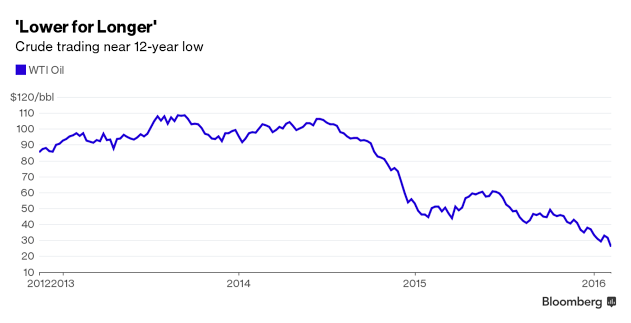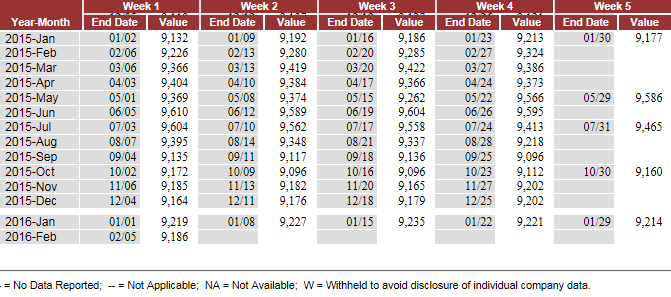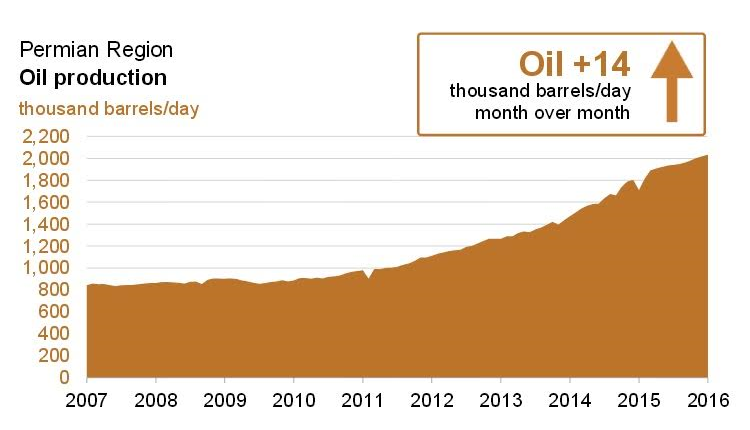It is over a year now since OPEC declared its market-share cold war against shale oil producers back in 2014, yet the cartel still can’t declare “mission accomplished” and claim its victory.
Following its decision not to cut oil production, OPEC expected oil prices to drop to $70 a barrel, which they thought would be enough to squeeze many shale oil producers out of the market.
The reality proved otherwise, shale oil producers were able to react quickly in order to reduce their costs through various cost-cutting measures to weather the storm of low oil prices. And many of them managed to survive at those prices.
For OPEC, that meant only one thing; oil prices have to slump further, therefore OPEC’s members pursued their market-share strategy and kept pumping.
In January 2015, oil prices were down at levels around $45-$55. During that time, OPEC’s Secretary-General was calling the bottom in oil prices. He offered a bullish statements during his speech in London on Jan. 26 by saying “Now the prices are around $45-$55, and I think maybe they have reached the bottom and we will see some rebound very soon.”

WTI Crude Oil Price, Source: Bloomberg
It was not too long after that, oil prices fell further making the remark of OPEC’s Secretary-General another layer of noise. Things didn’t go as OPEC expected and oil prices are still falling till today to levels not OPEC nor anyone else has expected at that time.
Today, oil prices are slightly above $30 a barrel down from over $100 a barrel in 2014. U.S. average rig counts is 541, down 1068 from their recent peak of 1,609 on Oct. 10, 2014. More than 40 U.S. oil and gas companies have filed for bankruptcy protection, and other companies are aggressively reducing their budgets aimed surviving the current downturn. And yet, U.S. oil production is only inching downwards.
Despite falling oil prices and rig counts declines, production cutbacks are relatively minor. According to EIA, in the U.S. alone, oil production has only declined 384,000 barrel a day from its peak in July 2015 of 9,598,000 barrel a day. In general, U.S. shale oil is showing a great resilience regardless of the current bearish sentiments.
A point worth mentioning here is the fact that U.S. oil production dropped to its lowest point during this downturn which was 9,096,000 barrel a day on September 2015. This can be seen as a normal reaction for the crashing prices. However, the following months production started increasing till it reached 9,227,000 barrel a day last month.

U.S. Weekly Crude Oil Production, Scourse: EIA
Economically, low oil prices means an inevitable decline in supply and historically, low rig count leads to declining oil production. But the current downturn has proved that this is not always the case. Something changed, and a new shift in the oil industry is taking place.
Technological Advancement is Beating Rig Count
Rig count is considered as a direct measure of the health of oil industry and oil production. Falling rig count lead to a decline in oil production, but why this is not the case in this downturn? Why shale oil producers are able to maintain production?
The answer to the above question lays on advanced technology introduced as well as better and efficient ways of producing the oil. Many companies are now focusing on increasing efficiency and productivity of their wells.
More cheaper and efficient well intervention and well completion technology, targeting richer sections of shale plays as in the case of the Permain Region -where production is in a continuous increase- as well as increasing the well productivity by using more sand in each hydraulic fracturing job. All these have offset the direct effect of falling rig count on oil production. Did OPEC expected that? Highly unlikely.

Permain Region Oil Production, Sources: EIA
A Short-Term Lose Better Than Out
Another reason that explains the resilience of shale oil is the fact that many operators who are still losing despite all the cost cutting measures prefer to take a loss and wait, because they know the oil market is boom and bust by nature and they expect things to get better soon. According to a report by Wood Mackenzie, given the cost of restarting production especially in large projects, many operators prefer to continue producing oil at a loss in hope for a rebound in prices rather than to stop production.
What OPEC’s Members didn’t Expect
It seems now that when the OPEC’s members decided not to cut their oil output back in 2014, they didn’t really expect the current resilience of U.S. shale oil. They didn’t expect the resilience of U.S. oil production despite the dramatic fall in rig count.
They didn’t expect that technology will be able to offset the effect of low oil prices and rig count on oil production. And most of all, they didn’t expect the oil prices to fall to its current levels. And this is not something new, they are not accurate at foreseeing the outcomes of their actions, if they were, they would have known that high oil prices will lead to the current shale oil boom in the first place.

